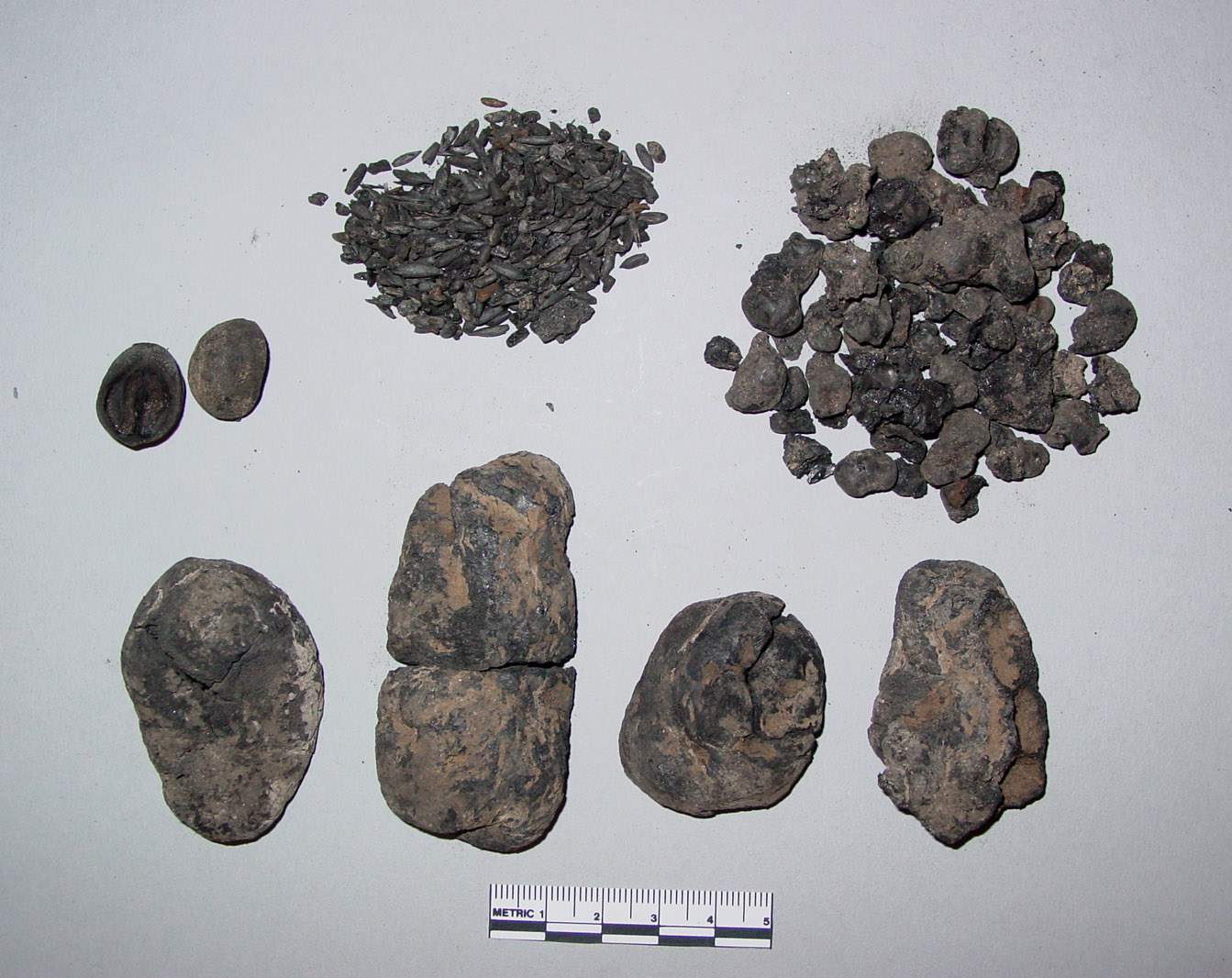
Carbonized food remains from the south cellar including oats, potatoes, corn or maize, and a hickory nut. Click image to enlarge.

|
|
Carbonized food remains from the south cellar including oats, potatoes, corn or maize, and a hickory nut. Click image to enlarge. |
Large and deep cellars were used to store a variety of foods, such as barrels of salted beef, pork, cider, and all sorts of fruits and vegetables. Cellars kept food stores dry and secure. They needed to be warm enough to keep food from freezing during the winter and cool enough not to spoil during the summer. Dug into the floor of the Spragues’ south cellar was a series of seven root-vegetable or sauce pits. Similar sauce pits were found outside of the 1712-ca. 1770s Daniels Site in Waterford, Connecticut. After a sauce pit was dug, it was lined with a light and dry material like straw, or sometimes with boards, and the root vegetables were placed inside and covered. Some pits were filled with sand, because rodents such as mice can’t tunnel through it (it collapses). The sauce pit was then mounded over with dry seaweed, hay, dirt or manure for insulation, particularly if it was outside. In his 1790 manual of farming and husbandry, Samuel Deane of Dedham, Massachusetts, described how to store potatoes in the ground:
There is no difficulty in keeping them [potatoes] through the winter...in a cellar that is free from frost. Caves dug in a dry soil, preserve them very well. They should be covered with two feet of earth over them. If they are in danger of frost in a cool cellar, they should be covered with a little salt hay.
During the winter months small holes were cut into the sauce pit to extract the root vegetables when needed. A pit was not reused in consecutive years because organic residues left in a pit would cause the next year’s crops to rot over winter; so, when emptied, pits were often filled with household trash.
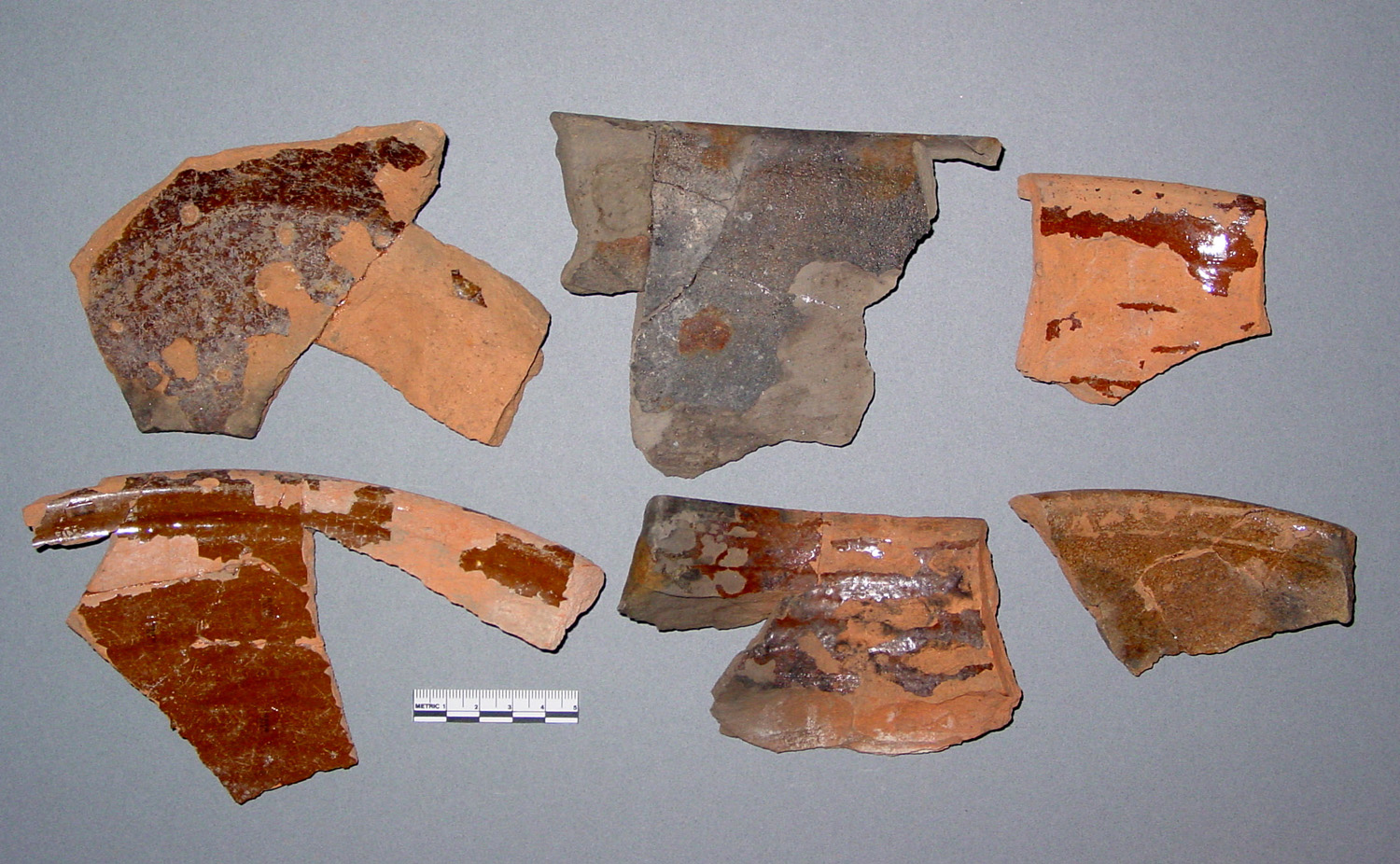
|
|
Cross-mended red earthenware milkpans and pots/butter pots. Click image to enlarge. |
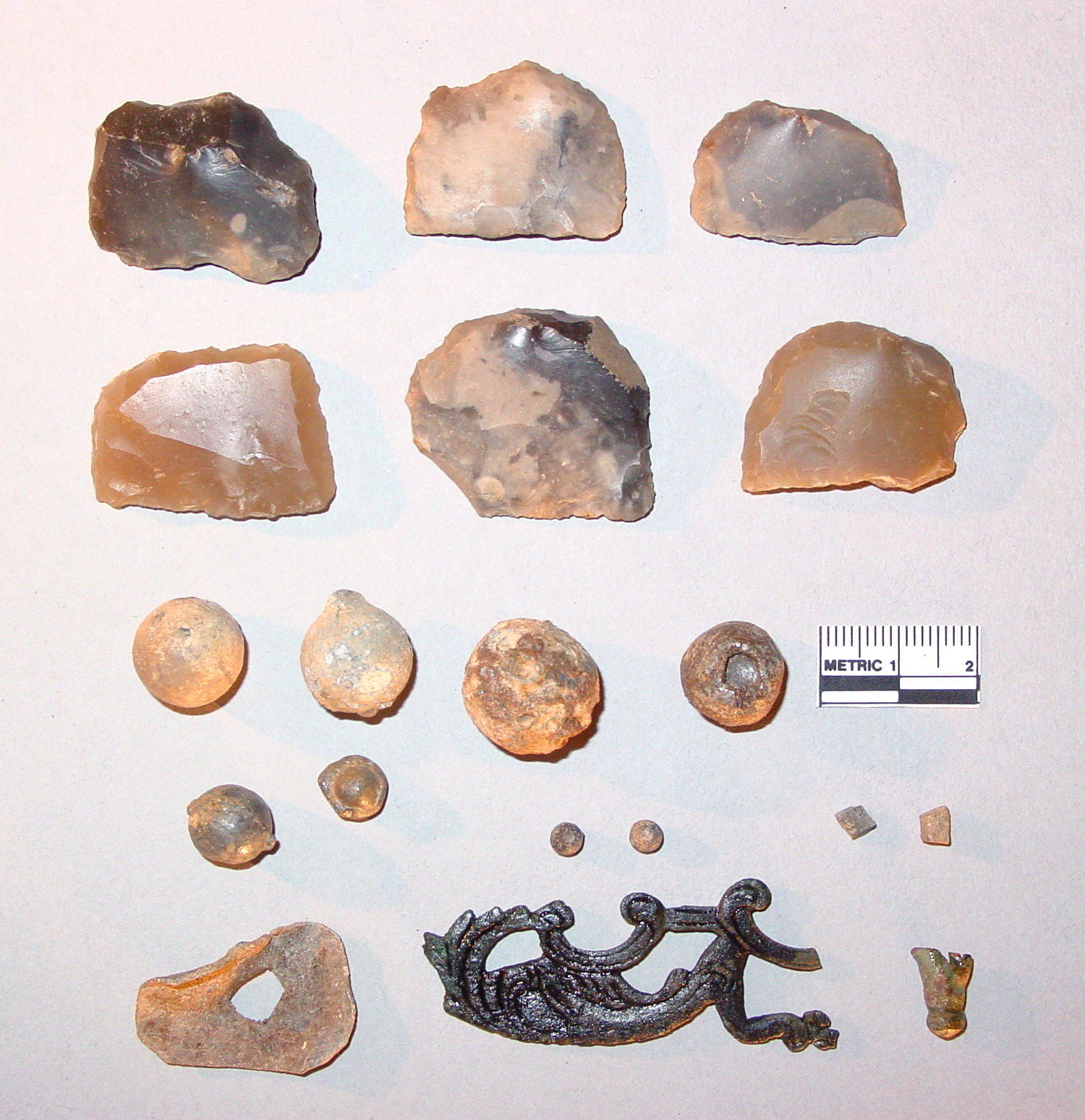
|
|
Gunflints, lead shot, musket balls, a lead gunflint wrap, a fragment of a brass side plate with dragon motif and the finial to a bayonet scabbard. Click image to enlarge. |
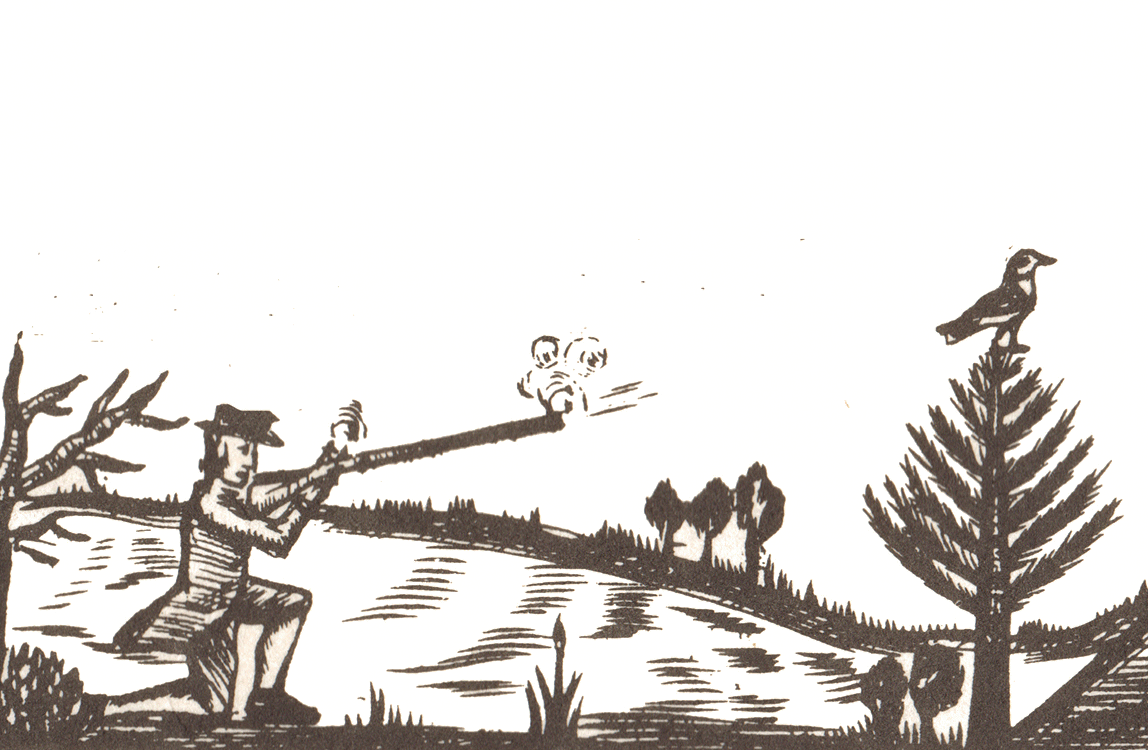
|
|
Hunter depicted in a 1799 drawing by Richard Brunton, an inmate at Newgate Prison in East Granby, Connecticut. |
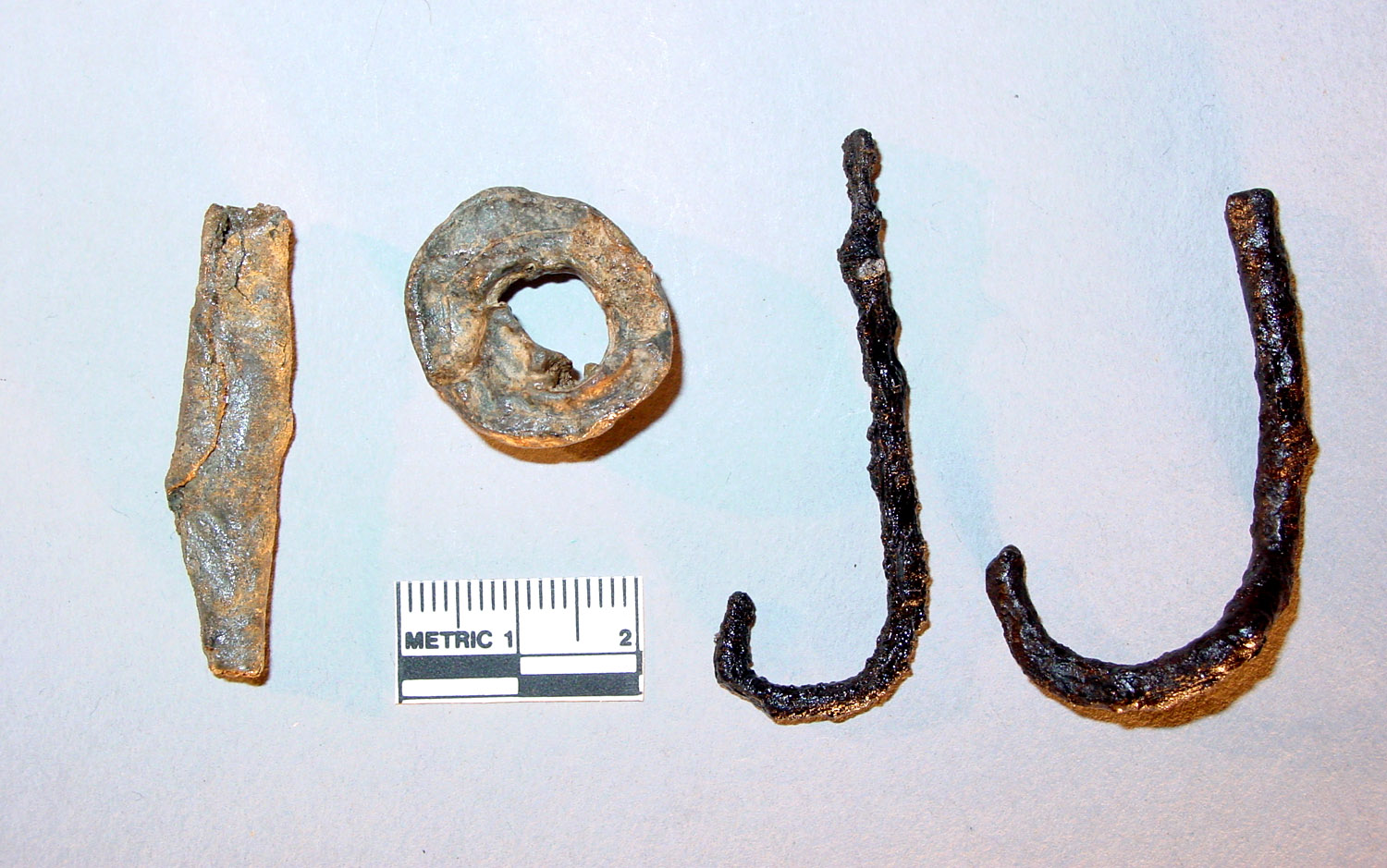
|
|
A lead net weight, a lead line sinker and two fishhooks. Click image to enlarge. |
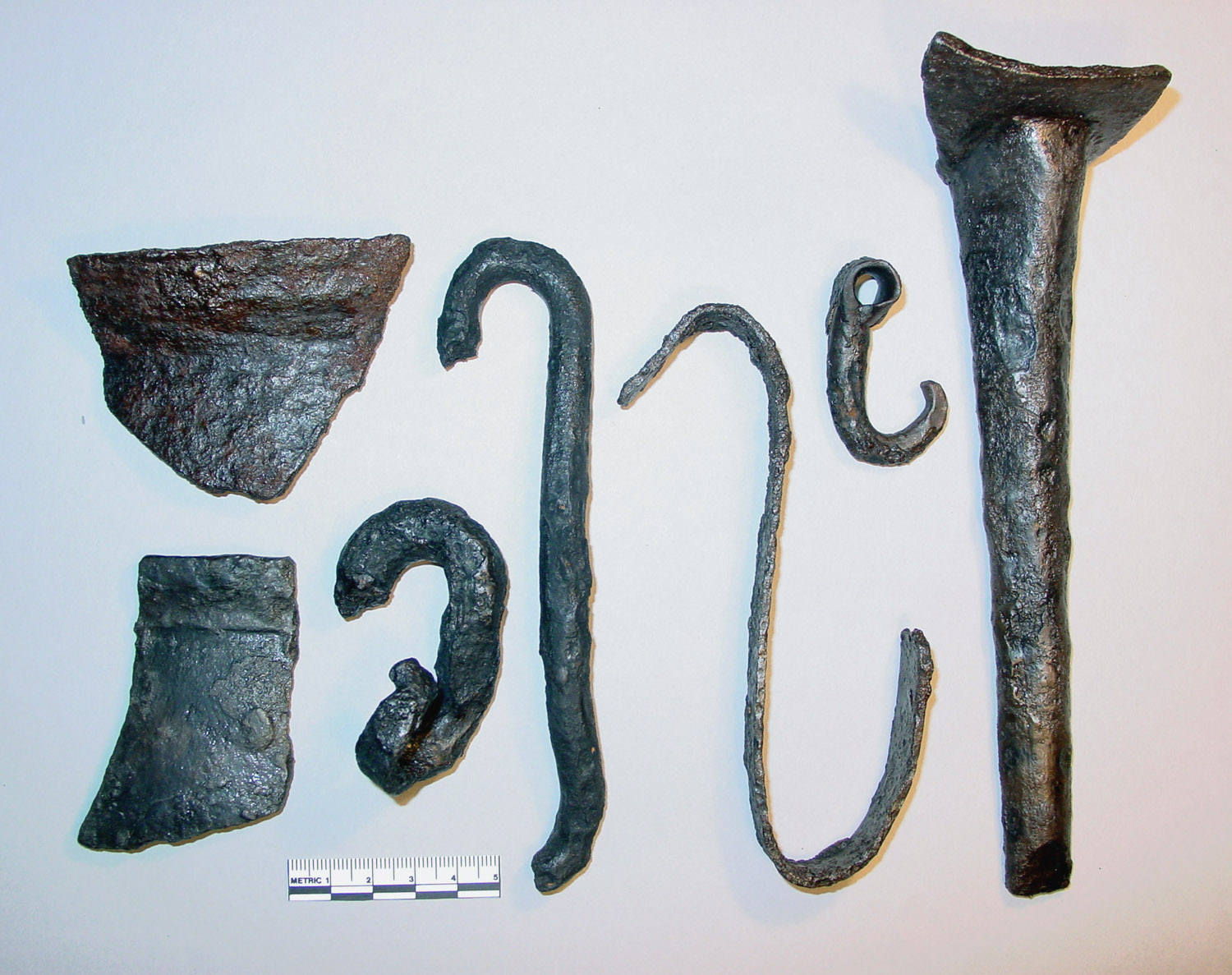
|
|
Cookwares. Fragments from a cast-iron pot rim, a cast-iron kettle rim, several kettle hooks and a leg to a large pot or kettle. Click image to enlarge. |
By the mid-18th century the foodways of the New England colonists had changed considerably from those of their Puritan forbears. Now colonists ate a remarkably rich and varied diet of European and American grains and vegetables. They had livestock, poultry and wild game, as well as exotic foods like chocolate, rum, spices and sugar from the West Indies and tea and spices from East Asia. Most families in 18th-century Connecticut were not merely subsistence farmers eking a living from hardscrabble farms, but were participants in a global economy; their small surpluses of grains, salted meats, cheese, cattle, horses, lumber and other products were sold to purchase imported goods. Most manufactured goods, such as window glass, iron tools, hardware and cookwares, fine ceramics and table glass, guns, and books were imported from Europe and shipped to Connecticut’s ports of Hartford, Middletown, New London, Norwich, and New Haven.
Puritans and the other early colonists typically ate simple one-pot
pottages
and stews with spoons and communal bowls and cups. By the mid-18th century the Spragues and many other families in New England were eating with round-tipped table knives and two-pronged forks on individual plates. Ceramic plates, however, were uncommon this early; the Spragues ate from pewter plates like the four listed in Ebenezer’s probate. Tea-drinking was also just becoming popular and a complete white salt-glazed stoneware tea set was discovered in the south cellar of the Sprague house.
Most of the pieces had been burned in the fire, but included two teapots, six tea bowls (cups),
four saucers and a creamer. Other eating vessels included large ceramic tankards and cups.
Older types of ceramic vessels were also found, including a yellow slipware posset pot with two handles
(a communal drinking vessel) and a large delftware punch bowl. These are ancient vessel forms that were
passed around the table for everyone to share. Meals were prepared by roasting over the open fire,
simmering stews and
chowders
in cast-iron kettles and baking meat or fruit pies or puddings in earthenware pans and dishes. Much of the basis our modern-day foodways were developed during the time of Ebenezer Sprague, which can be seen in the artifacts recovered from the site.
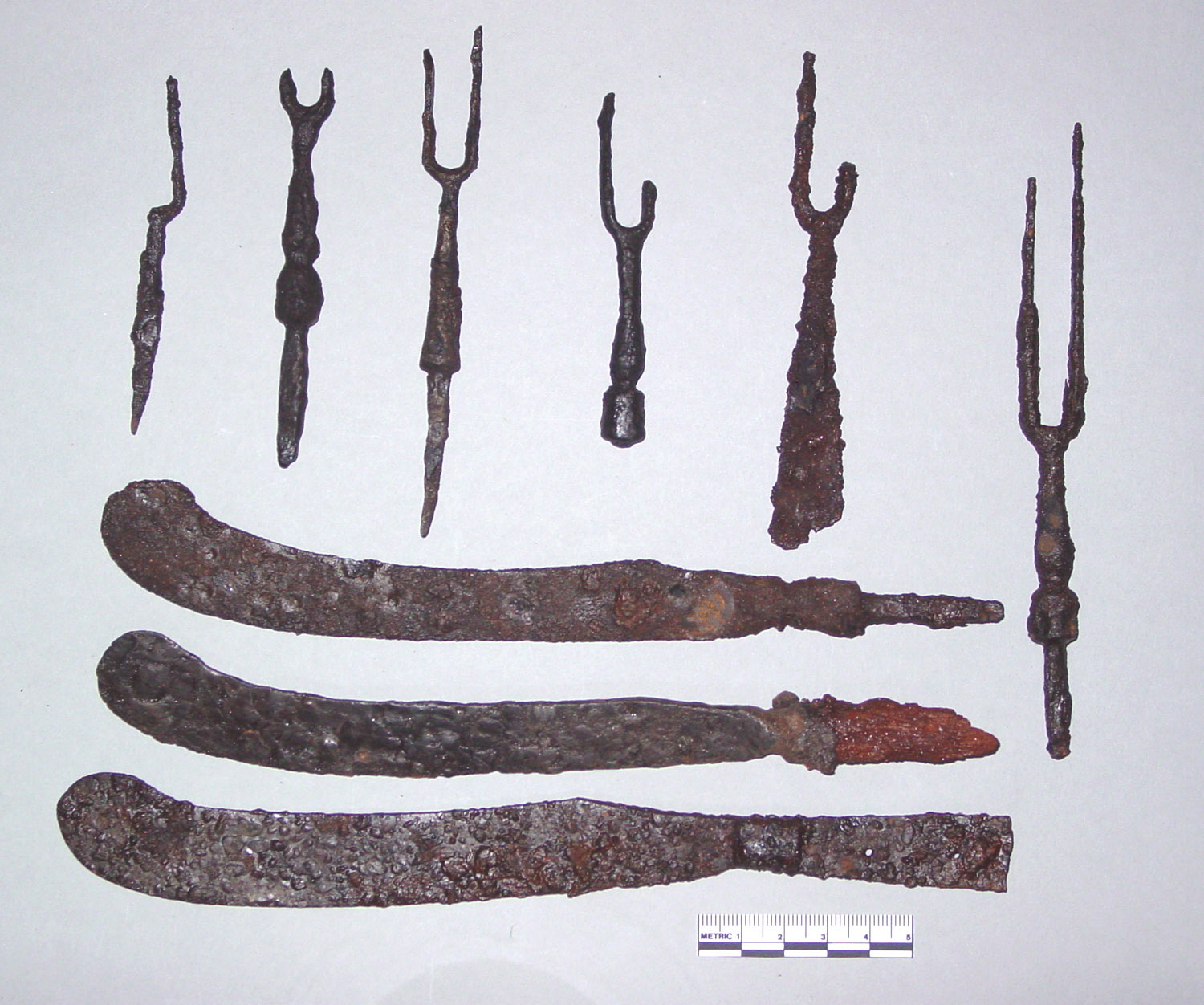
|
|
Set of table knives and forks. Most had been lost in the house fire. |

|
|
Part of a cross-mended white salt-glazed stoneware tea set that burned in the house fire. |
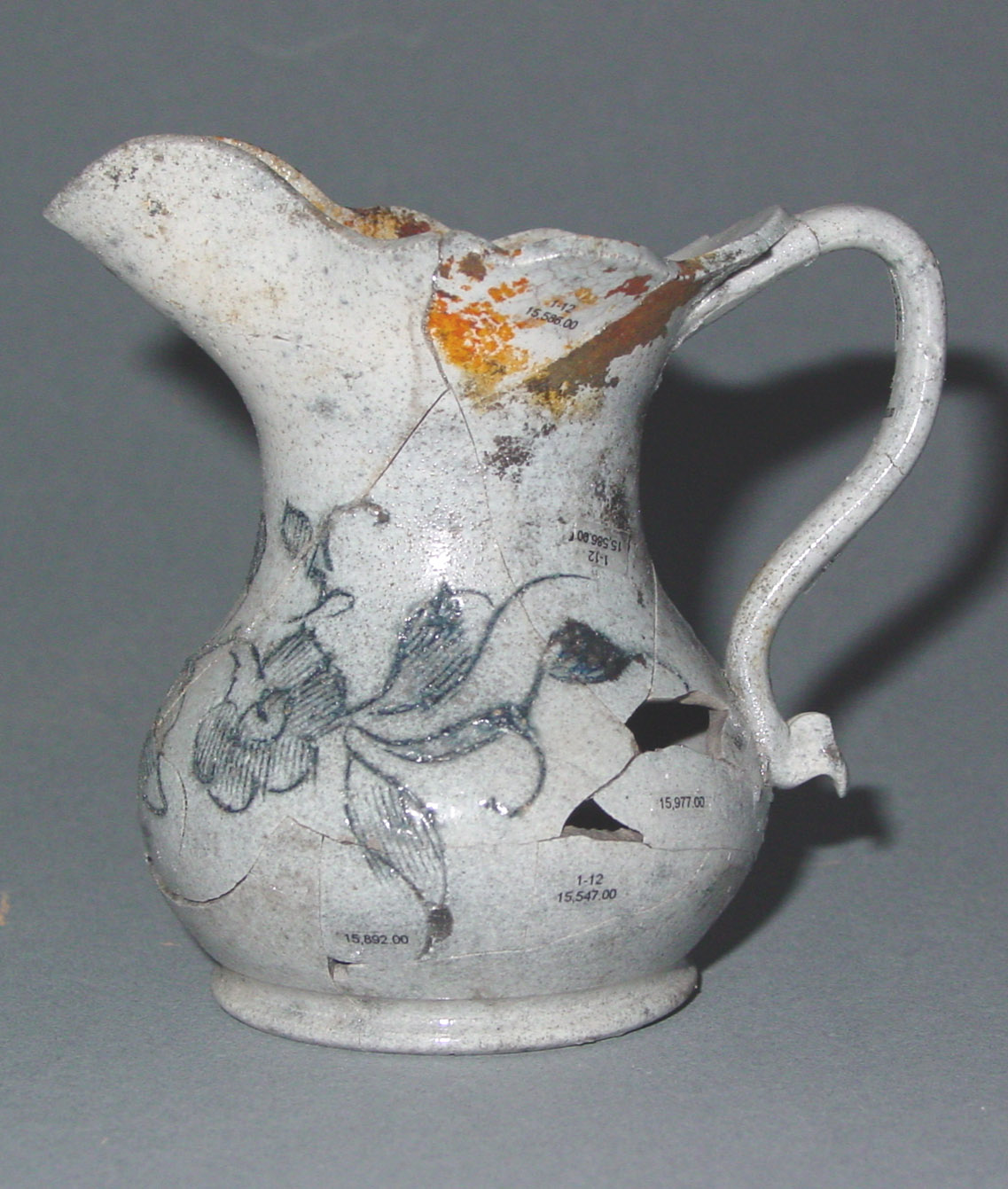
|
|
Cross-mended white salt-glazed stoneware scratch-blue creamer from the tea set. It is 4 ½ inches tall. |

|
|
A burned and cross-mended two-handled yellow slipware posset pot. It is 5 ½ inches in diameter and 5 ¼ inches tall. |
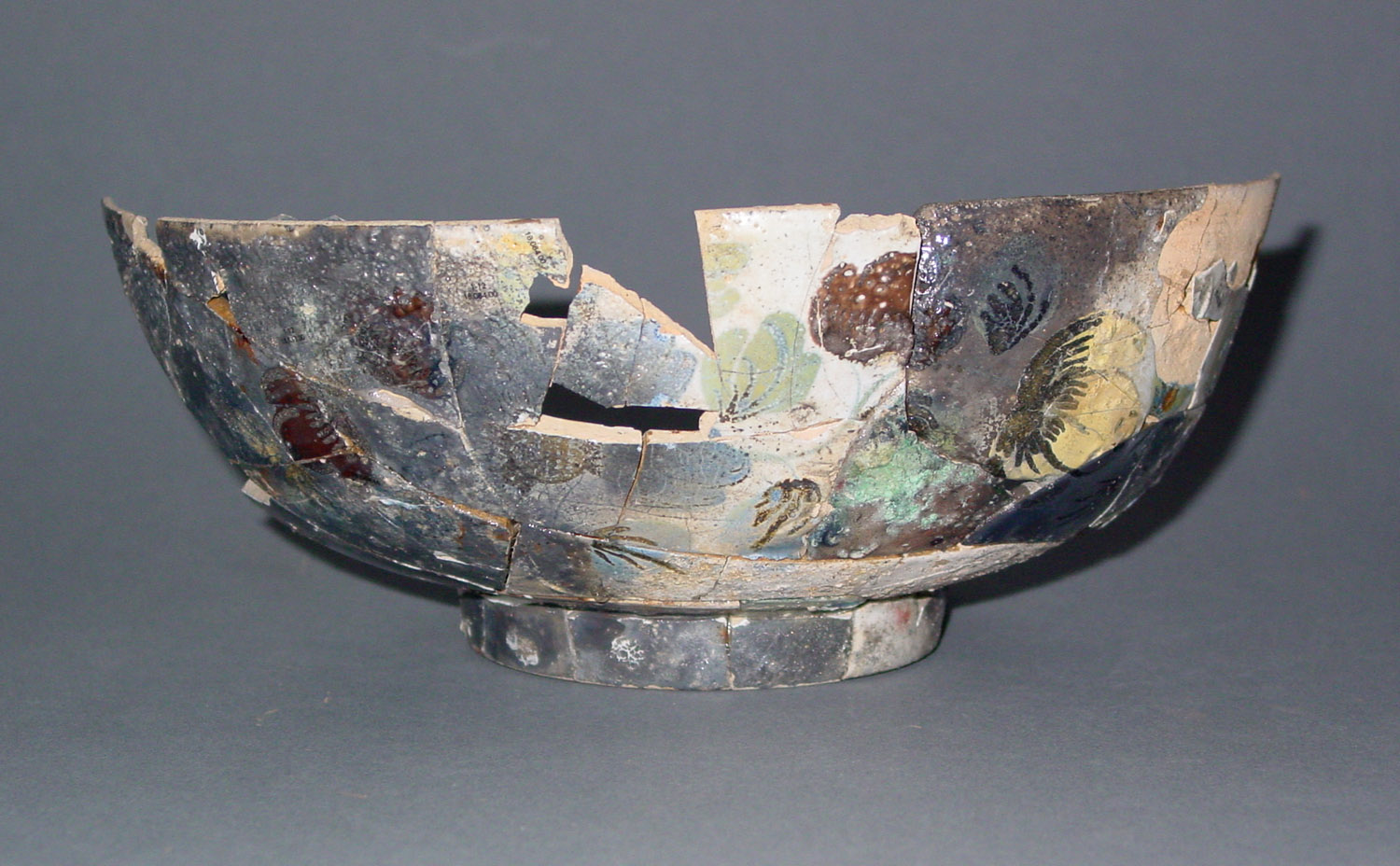
|
|
A burned and cross-mended polychrome delftware punch bowl. It is 9 inches in diameter and 3¾ inches tall. |
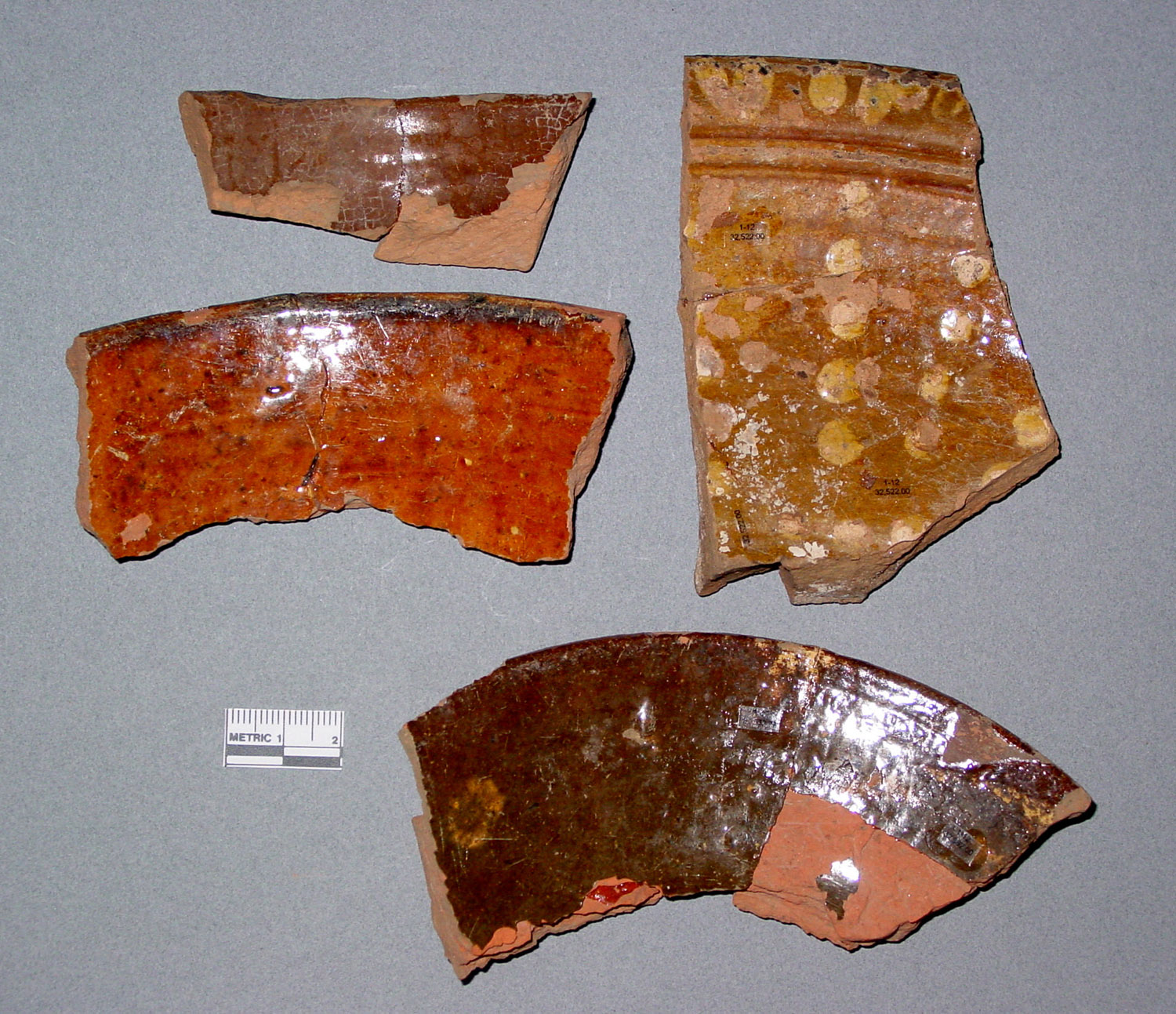
|
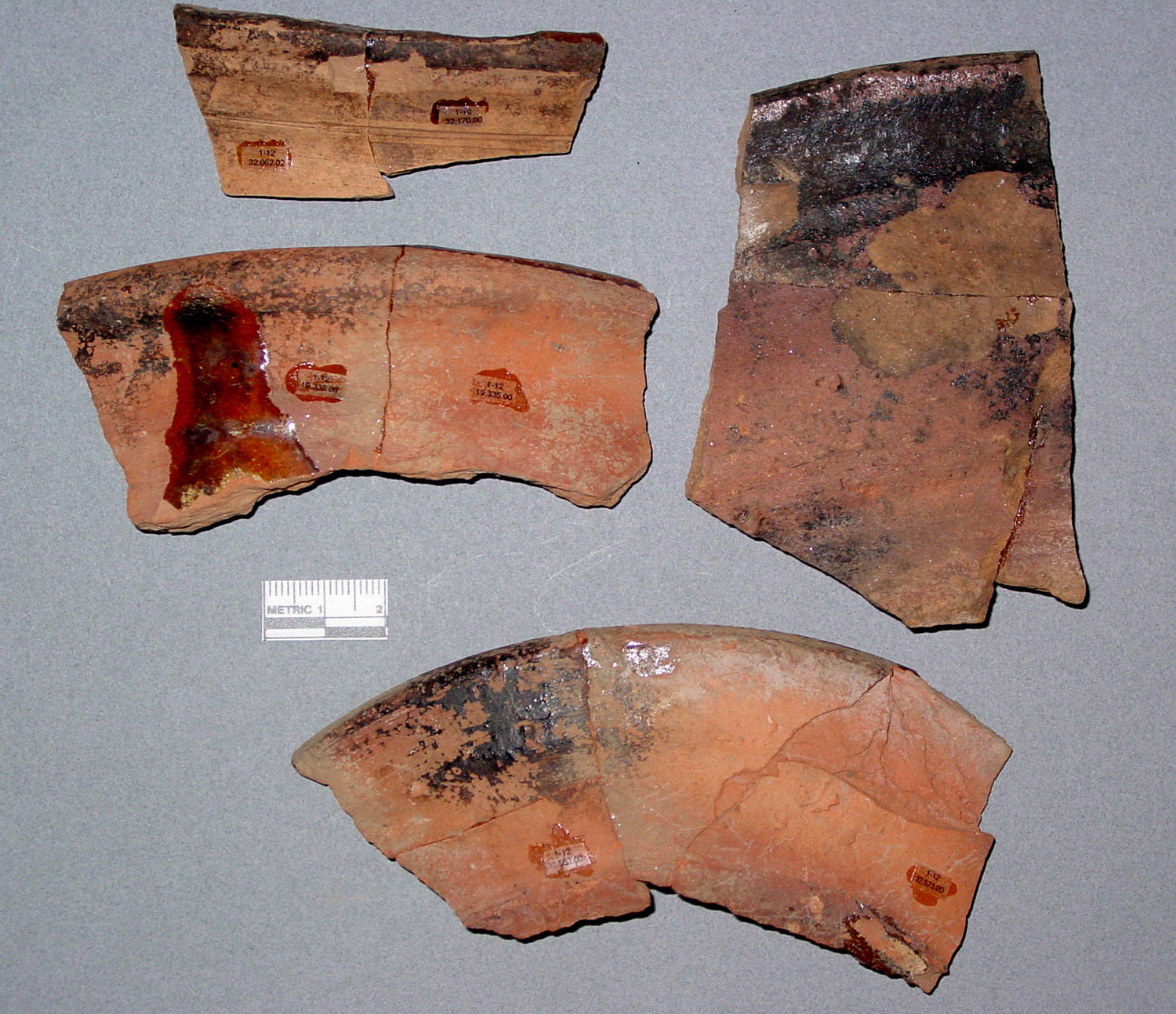
|
The front and reverse of several red earthenware baking dishes and a pan. The backs show the distinctive black scorch marks from food-residue staining around the back of the rims. Meat and fruit pies and puddings were common foods on the supper table in 18th-century Connecticut. In AMERICAN COOKERY, published in Connecticut in 1796, author Amelia Simmons gave recipes for “chicken pie,” “foot pie,” “tongue pie,” and “apple pie.”